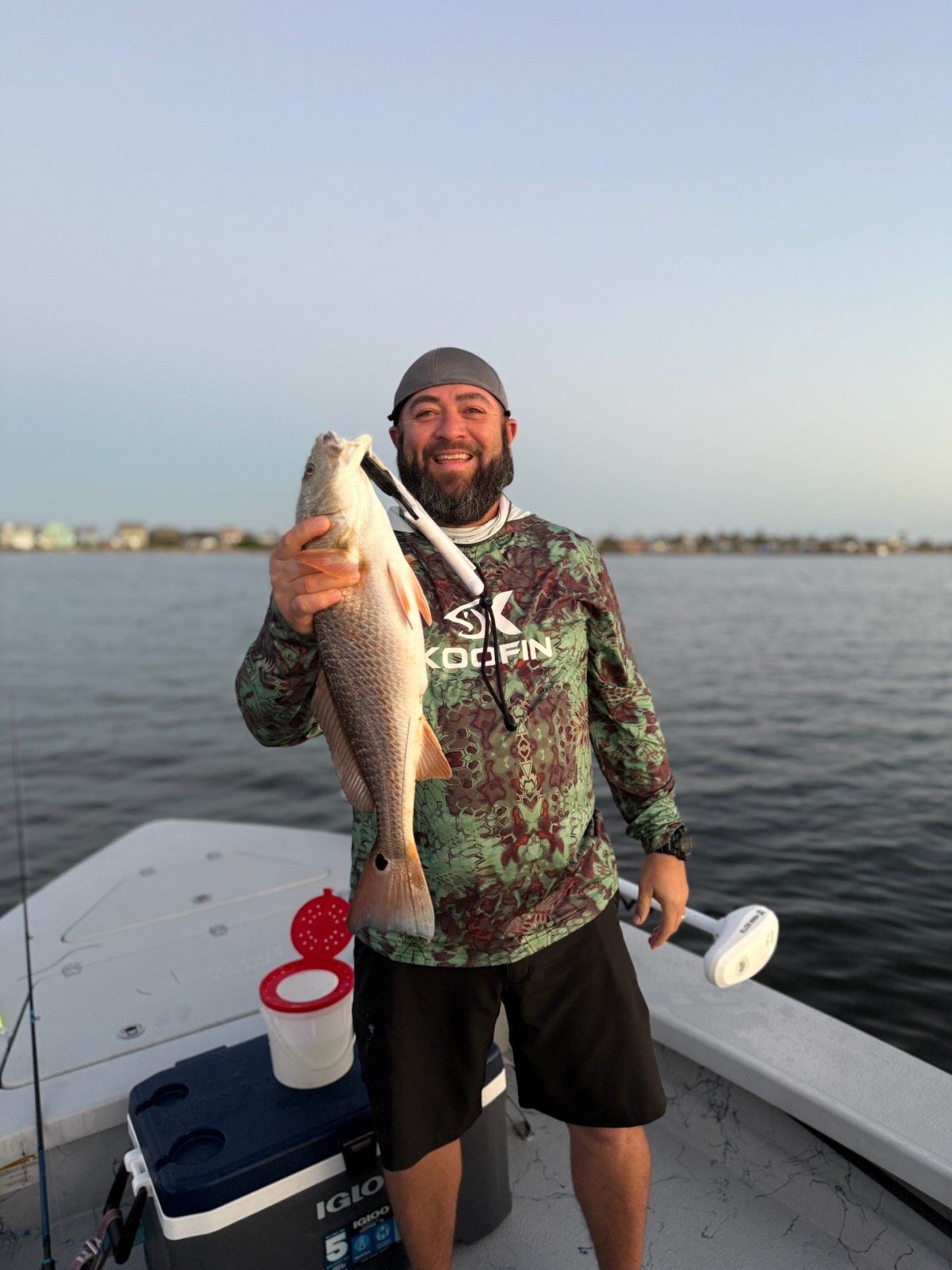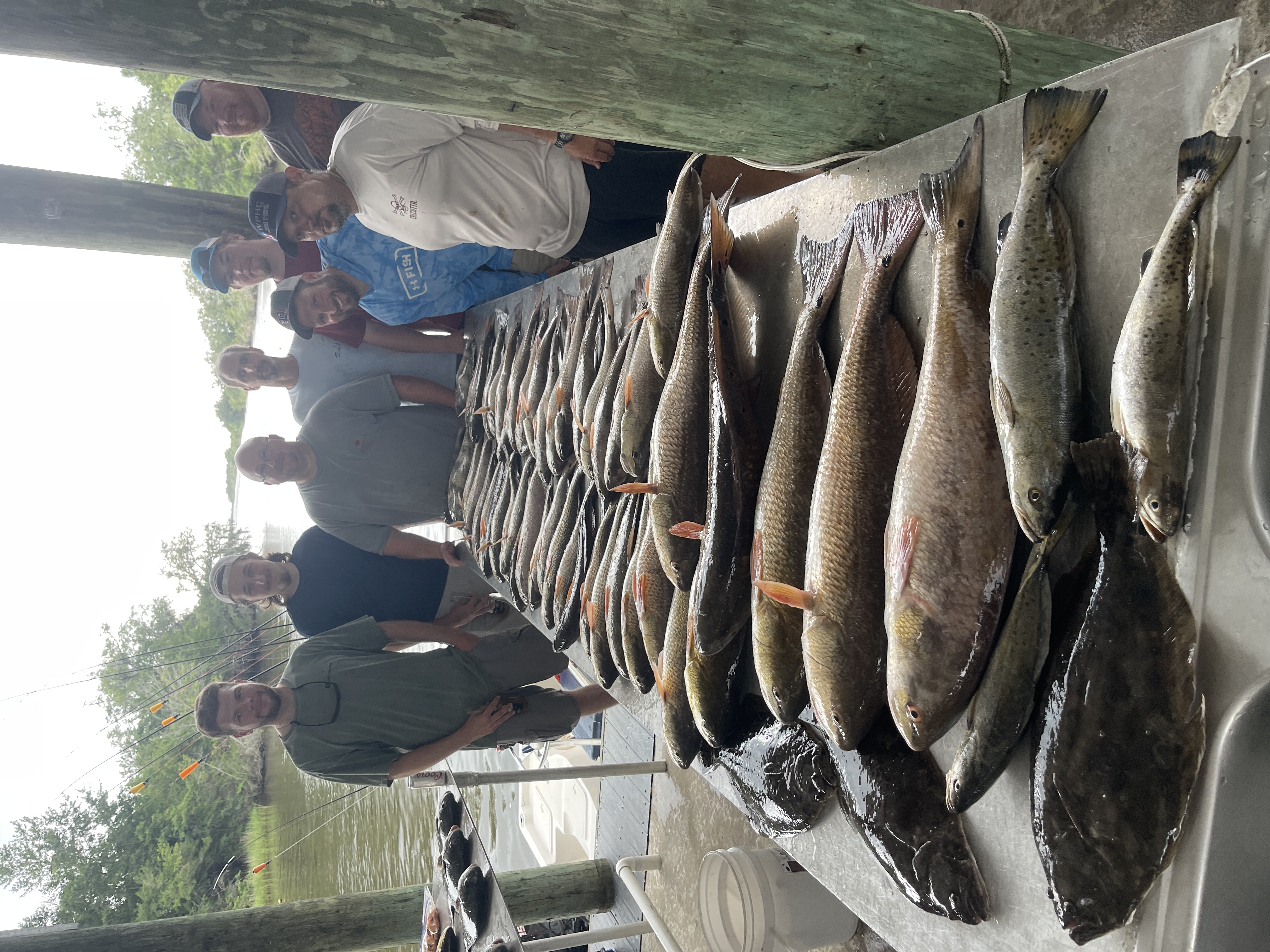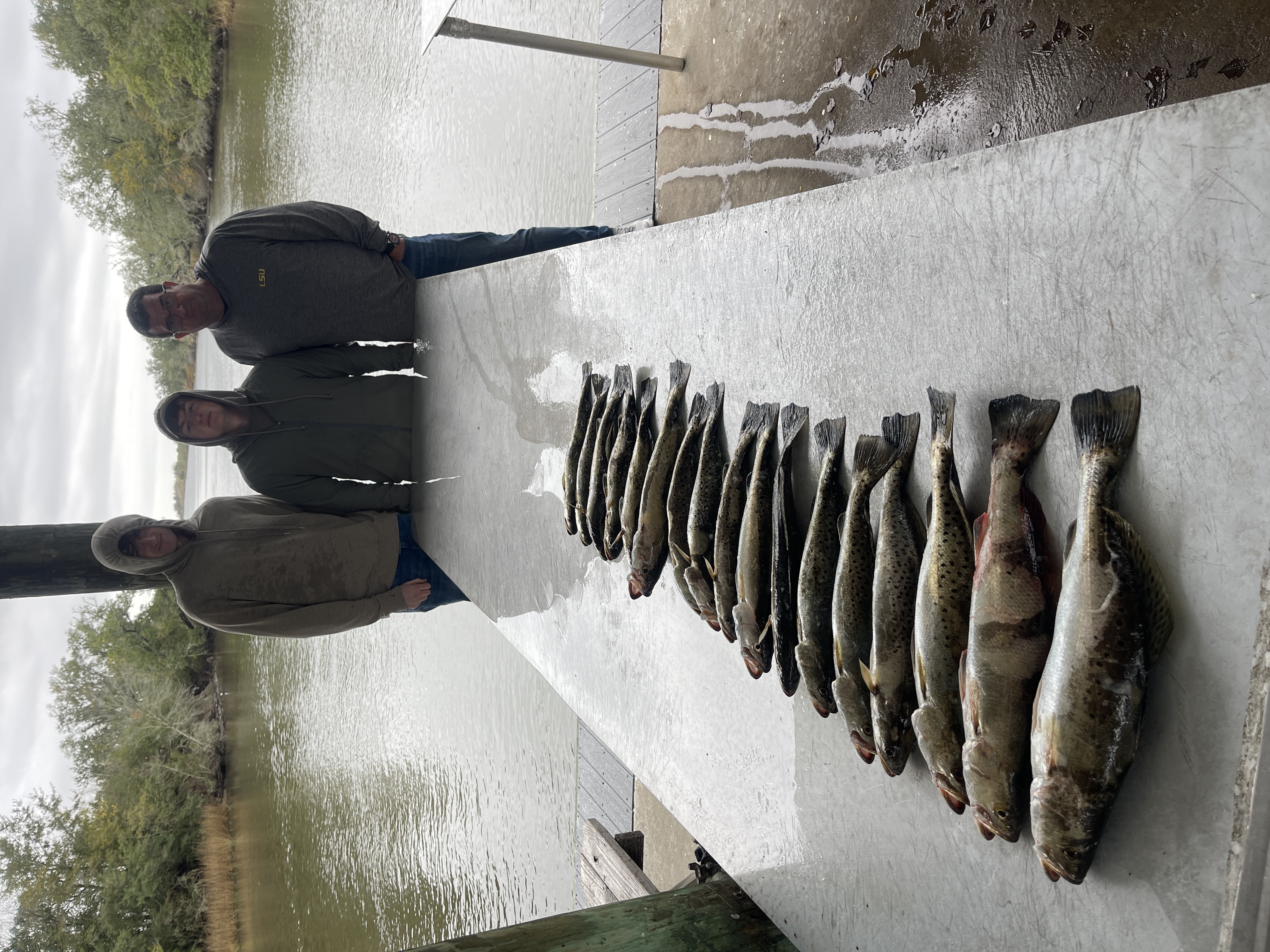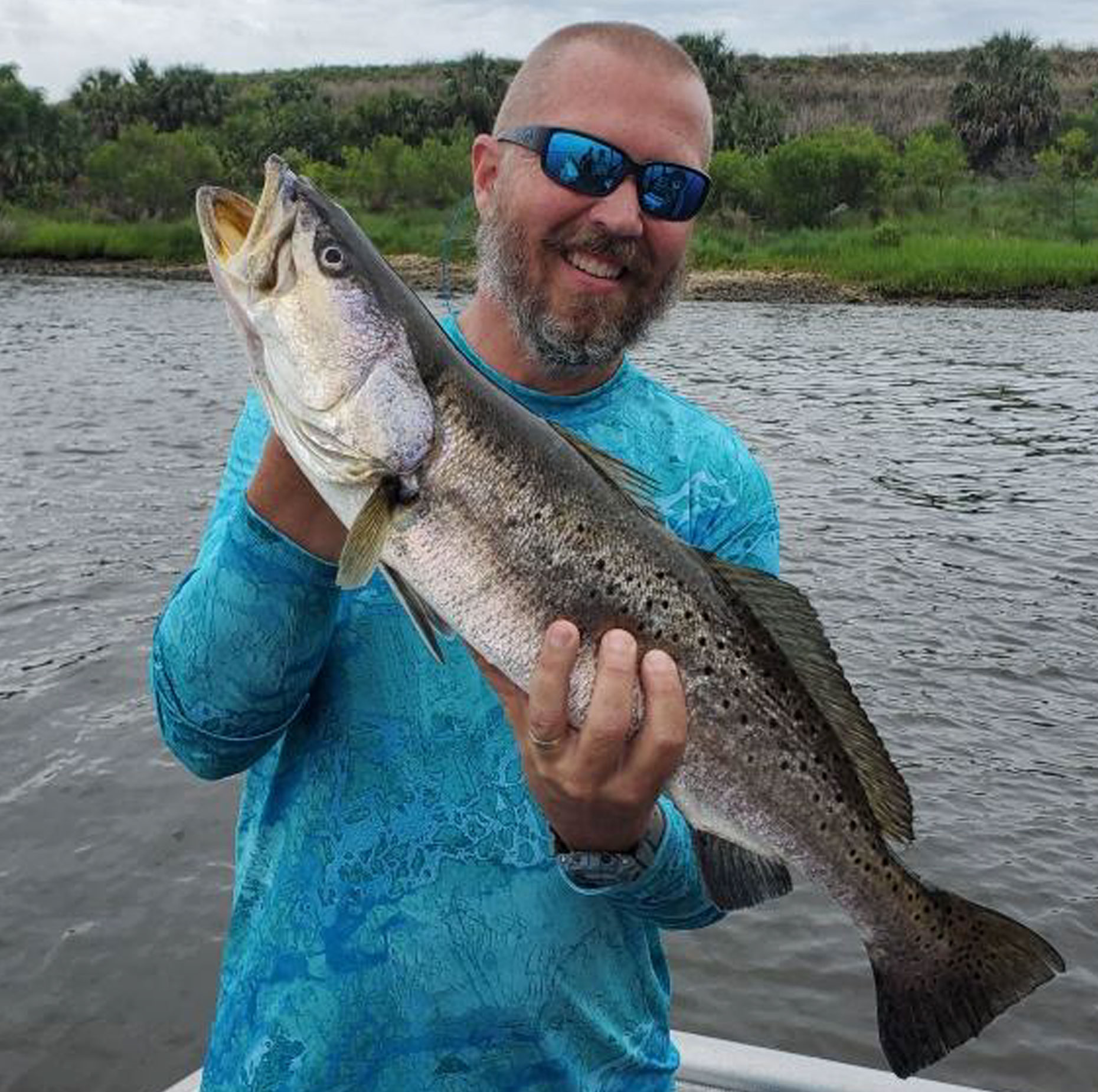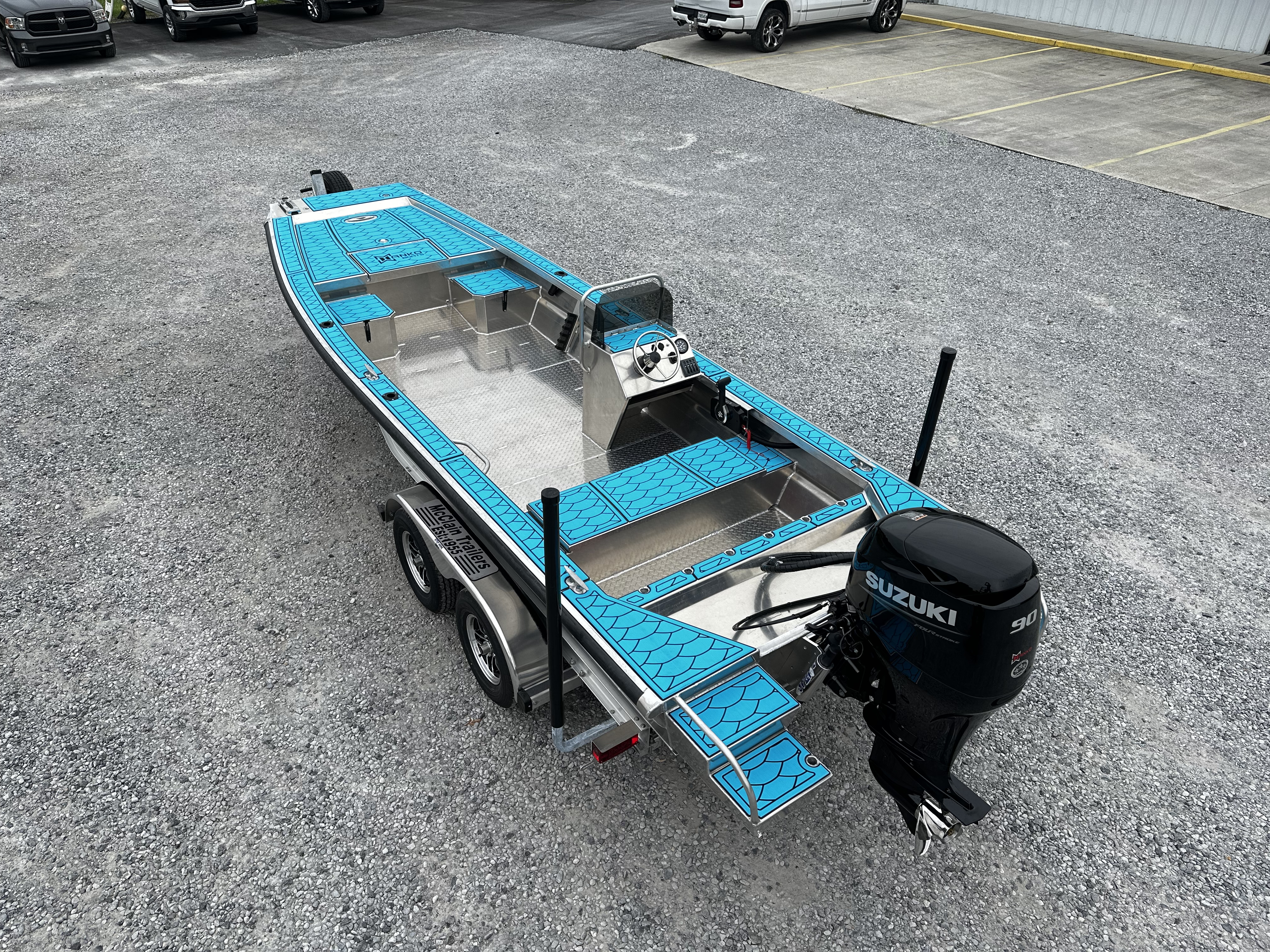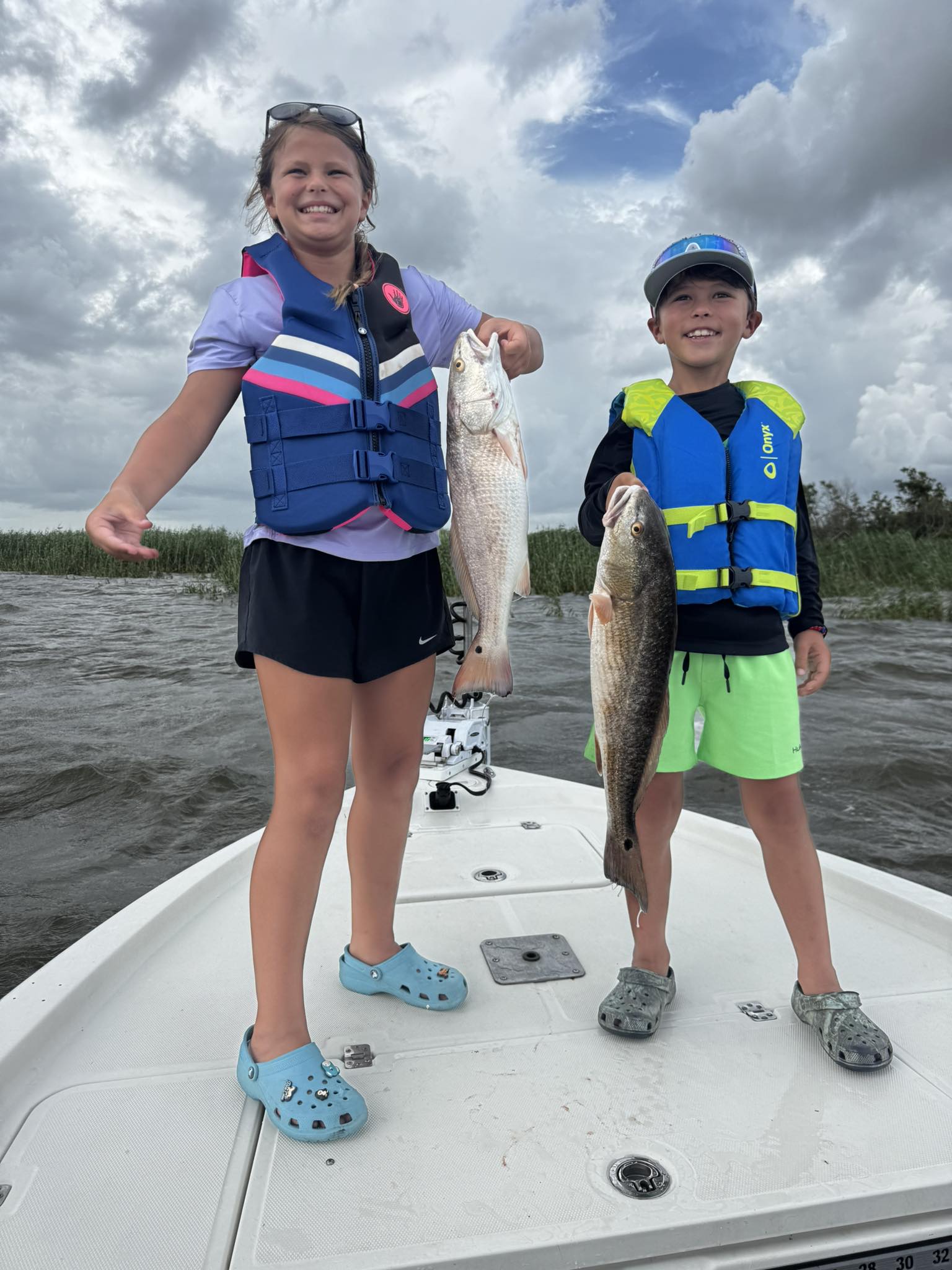Inshore Fishing in Corpus Christi
Hook, Line & Memories Fishing Trip
Inshore, Lake, Flats in Saint Bernard
Winter Special
Inshore, Nearshore, Flats in Biloxi
Inshore/Nearshore Fishing Charters!
Inshore, River, Flats in Matagorda
Matagorda Bay Fishing Charters
Inshore, Jetty, River in New Smyrna Beach
Inshore, Bridge And Inlet
Inshore, River, Flats in Jacksonville
Jacksonville - 4 Hr. River & Marsh
Inshore Fishing in Atlantic Beach
Inshore Fishing
Inshore Fishing in Hilton Head Island
Inshore Fishing
Inshore, Dolphin Watching in Hilton Head Island
Family Fishing & Dolphin Trip
Inshore, Nearshore, Flats in Venice
Tails In The Tides-Redfish & Trout
We started Captain Experiences to make it easy to book fishing and hunting guides around the world. With over 2,000 Damn Good Guides, our platform makes finding and booking a trip seamless. Head here to check out our trips.
Sheepshead are a popular saltwater fish found in various habitats along the Atlantic and Gulf coasts of the United States. These fish are known for their distinctive appearance, with sharp teeth and black vertical bars on their silvery bodies, sometimes looking a bit like a rounded juvenile black drum. They are known to be one of the tastiest inshore fish and can put on a good little fight for an inshore fish.

Where can you catch Sheepshead?
-
Piers and Jetties: Piers and jetties provide excellent habitats for sheepshead. These structures offer a combination of structure, current breaks, and a diverse array of marine life, creating an ideal environment for sheepshead to forage. Sheepshead often hang around the pilings and submerged structures, such as barnacle-encrusted posts, where they feed on crustaceans, mollusks, and small fish. The piers and jetties also serve as a refuge for juvenile fish, providing a steady food supply for sheepshead.
-
Rocky Coastal Areas: Sheepshead are commonly found in rocky coastal areas, where they utilize the structure for protection and feeding. Rocky outcrops, jetties, and artificial reefs attract sheepshead as these locations are rich in barnacles, oysters, and other invertebrates that form a significant part of their diet. The rocky substrate also offers hiding places for prey and provides sheepshead with the cover needed to ambush their meals.
-
Inshore Waters and Estuaries: Sheepshead can also be found in inshore waters, including estuaries and tidal creeks. These areas provide a mix of freshwater and saltwater, creating an environment where sheepshead can find abundant food sources. Marshy areas with submerged vegetation and oyster beds contribute to the diverse ecosystem that supports juvenile fish, crustaceans, and mollusks—important components of sheepshead's diet.
What seasons are best for catching sheepshead?
Sheepshead fishing is influenced by seasonal and daily factors, and understanding these patterns can be the difference between a successful day on the water and a frustrating return to the dock. While sheepshead can be caught throughout the year, there are certain seasons and times of day that tend to be more productive.
Seasons:
-
Winter and Spring: These seasons are generally considered prime times for sheepshead fishing. During the colder months, sheepshead move inshore and gather around structures like piers, jetties, and oyster beds. In winter, they are often found in deeper water, while spring sees them moving toward shallower areas for spawning.
-
Spring Spawn: Sheepshead have a distinct spawning season in spring, typically from late February to early April, depending on the region. During this period, they congregate in large numbers near inshore structures to reproduce. Anglers often target these spawning aggregations for higher catch rates.
-
Fall: Fall can also be a good time for sheepshead fishing. As water temperatures cool down, sheepshead may move from deeper waters to shallower areas, providing anglers with opportunities to catch them near structures.
Times of Day:
-
High Tide: Sheepshead are often more active during high tide. As the tide rises, it brings in a fresh supply of prey around structures, making it an opportune time for sheepshead to feed. Fishing around high tide, especially during a moving tide, can increase your chances of success.
-
Early Morning and Late Afternoon: Sheepshead are known to be more active during low-light conditions. Early morning and late afternoon are favored times for fishing, as the reduced light levels provide sheepshead with a sense of security while feeding. Overcast days can also be productive.
Migratory Patterns:
Sheepshead are not highly migratory fish, but they do exhibit some movement patterns related to seasonal changes and spawning activities. During winter, they may move to deeper water, while in spring, they migrate toward shallower areas for spawning. Understanding these patterns can help anglers locate schools of sheepshead more effectively.
Local conditions like water temperature, weather, and specific habitat preferences, can of course also influence sheepshead behavior in different regions.

What gear should you rig up to catch sheepshead?
-
Rod:
- Beginner's Choice: A medium to medium-heavy spinning rod of 6.5 to 7.5 feet is suitable for beginners. This provides versatility for various fishing scenarios, especially around structures and piers.
- Advanced Option: Experienced anglers may prefer a specialized sheepshead rod with a faster action and greater sensitivity. A 7-foot medium-light to medium-power rod can be more precise when detecting subtle bites.
-
Reel:
- Beginner's Choice: Pair the rod with a spinning reel in the 3000 to 4000 size range. This provides enough line capacity and power to handle sheepshead in inshore environments.
- Advanced Option: For advanced anglers, a high-quality spinning reel with a smooth drag system in the 4000 to 5000 size range is ideal. Look for a reel with corrosion-resistant components, as sheepshead often inhabit brackish waters.
-
Line:
- Beginner's Choice: Use a monofilament or fluorocarbon line in the 10 to 15-pound test range for beginners. This provides a good balance of strength and sensitivity.
- Advanced Option: Advanced anglers might opt for braided line with a fluorocarbon leader. A 20 to 30-pound braided mainline offers increased sensitivity and strength, while a fluorocarbon leader of 15 to 20 pounds provides stealth and abrasion resistance.
-
Hooks:
- Beginner's Choice: Start with size 1 to 1/0 circle or J-hooks, as they are effective for sheepshead and are easier to set for beginners. Use a strong and durable material, as sheepshead have powerful jaws.
- Advanced Option: Advanced anglers may experiment with specialized sheepshead hooks, such as J-hooks designed for live bait presentations. Size 1 to 2/0 is commonly used, depending on the bait size.
The best lures for sheepshead
-
Jigs:
- How to Use: Use a bucktail jig or soft plastic jig that mimics the appearance of crabs or small baitfish. Work the jig along the bottom with short, jerky motions to imitate natural prey.
-
Crab Imitation Lures:
- How to Use: Soft plastic lures designed to imitate crabs can be effective. Retrieve these lures slowly and with occasional pauses to mimic the movements of natural prey.
-
Shrimp Imitation Lures:
- How to Use: Soft plastic shrimp imitations, often rigged on a jig head, can attract sheepshead. Mimic the natural swimming motion of shrimp by imparting a series of short twitches to the lure.
-
Fish-Profile Soft Plastics:
- How to Use: Soft plastics in the shape of small fish, such as paddletail or jerk bait, can be effective. Retrieve these lures with a varied and erratic action to imitate injured prey.
Tips for Effective Bait and Lure Presentation
-
Natural Drift: Allow your bait or lure to drift naturally with the current, especially when fishing around structures like pilings and jetties.
-
Adjust Weight: Use an appropriately sized weight to ensure your bait or lure reaches the desired depth. Sheepshead often feed close to the bottom.
-
Downsizing Tackle: Given the sheepshead's finicky nature, consider downsizing your tackle, including hooks and leader material, to increase your chances of hooking them.
-
Patience with Bites: Sheepshead can be subtle biters, so be patient. Wait for a steady pull or any change in line tension before setting the hook.
-
Vary Retrieval Speed: Experiment with different retrieval speeds, especially when using artificial lures. Sometimes a slow and steady retrieve works, while other times a more erratic or twitchy motion is effective.
-
Fish Structure: Target areas with structure, such as pilings, rocks, and oyster beds, where sheepshead are likely to congregate.
What are the top destinations for sheepshead fishing?
-
Florida: Florida is renowned for its sheepshead fishing, especially in locations like Tampa Bay, Jacksonville, and the Florida Keys. Target areas with structures such as bridges, piers, and jetties. Live shrimp and fiddler crabs are popular baits. Check local regulations for size and bag limits.
-
Texas: The Texas Gulf Coast, including areas like Galveston Bay and Corpus Christi, offers excellent sheepshead fishing. Target oyster beds, rock jetties, and piers. Use live shrimp or small crabs as bait. Be aware of seasonal changes and variations in water temperature.
-
Louisiana: Sheepshead are abundant along the Louisiana coast, particularly around structures like oil rigs and rock jetties. Fishing in marshy areas and near oyster beds can also be productive. Check for any specific gear or size regulations in Louisiana waters.
-
North Carolina: North Carolina's coast, including areas like the Outer Banks and Wilmington, provides good sheepshead fishing opportunities. Target structures like docks and piers. Fiddler crabs and live shrimp are effective baits. Follow North Carolina's saltwater fishing regulations.
-
South Carolina: The waters around Charleston and Hilton Head are known for quality sheepshead fishing. Fish around bridges, docks, and oyster beds. Fiddler crabs and live shrimp are preferred baits. Familiarize yourself with South Carolina's saltwater fishing regulations.
-
Georgia: Georgia's coastal areas, including Savannah and St. Simons Island, offer productive sheepshead fishing. Target bridges, jetties, and artificial reefs. Live shrimp and fiddler crabs are effective baits. Stay updated on Georgia's saltwater fishing regulations.
-
Alabama: The Alabama Gulf Coast, including areas like Mobile Bay and Gulf Shores, provides opportunities for sheepshead fishing. Target structures like docks and rock piles. Use live shrimp or fiddler crabs as bait. Comply with Alabama's saltwater fishing regulations.
-
Mississippi: Mississippi's coastal waters, including areas around Biloxi and Gulfport, offer sheepshead fishing around structures like bridges and piers. Live shrimp and fiddler crabs are popular baits. Familiarize yourself with Mississippi's saltwater fishing regulations.
Jake Lane
Updated on August 29, 2024

June 3, 2021

June 28, 2023

July 31, 2024

May 13, 2024

August 21, 2023
Related Articles
October 30, 2023
June 23, 2023
May 6, 2021
Featured Locations
- Fishing Charters Near Me
- Austin Fishing Guides
- Biloxi Fishing Charters
- Bradenton Fishing Charters
- Cabo San Lucas Fishing Charters
- Cancun Fishing Charters
- Cape Coral Fishing Charters
- Charleston Fishing Charters
- Clearwater Fishing Charters
- Corpus Christi Fishing Charters
- Crystal River Fishing Charters
- Dauphin Island Fishing Charters
- Daytona Beach Fishing Charters
- Destin Fishing Charters
- Fort Lauderdale Fishing Charters
- Fort Myers Fishing Charters
- Fort Walton Beach Fishing Charters
- Galveston Fishing Charters
- Gulf Shores Fishing Charters
- Hatteras Fishing Charters
- Hilton Head Fishing Charters
- Islamorada Fishing Charters
- Jacksonville Fishing Charters
- Jupiter Fishing Charters
- Key Largo Fishing Charters
- Key West Fishing Charters
- Kona Fishing Charters
- Lakeside Marblehead Fishing Charters
- Marathon Fishing Charters
- Marco Island Fishing Charters
- Miami Fishing Charters
- Montauk Fishing Charters
- Morehead City Fishing Charters
- Naples Fishing Charters
- New Orleans Fishing Charters
- New Smyrna Beach Fishing Charters
- Ocean City Fishing Charters
- Orange Beach Fishing Charters
- Panama City Beach Fishing Charters
- Pensacola Fishing Charters
- Pompano Beach Fishing Charters
- Port Aransas Fishing Charters
- Port Orange Fishing Charters
- Rockport Fishing Charters
- San Diego Fishing Charters
- San Juan Fishing Charters
- Sarasota Fishing Charters
- South Padre Island Fishing Charters
- St. Augustine Fishing Charters
- St. Petersburg Fishing Charters
- Tampa Fishing Charters
- Tarpon Springs Fishing Charters
- Venice Fishing Charters
- Virginia Beach Fishing Charters
- West Palm Beach Fishing Charters
- Wilmington Fishing Charters
- Wrightsville Beach Fishing Charters
